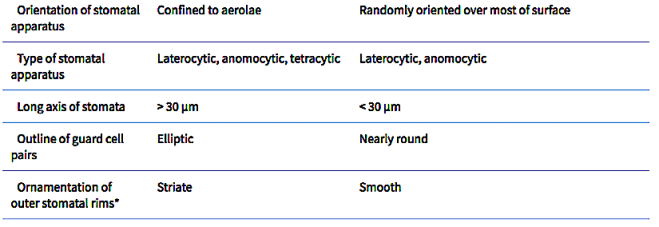Characters of leaf epidermis of Schizophragma crassum var. ellipticum under light microscopy: adaxial on the left, abaxial on the right. Scale bars, 50 µm. [A, B, G. Forrest 29029 (Liu & Zhu, 2009, figs 15, 16)].
===
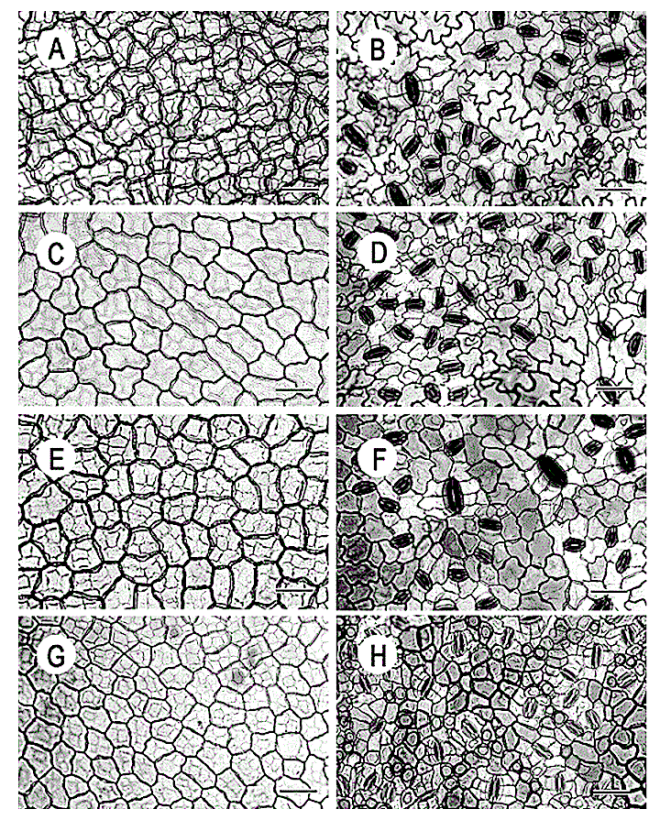
Leaf epidermal characters and taxonomic revision of Schizophragma and Pileostegia (Hydrangeaceae)
by Liu W., Lin X.-Y. (2011)
,
Institute of Botany, Chinese Academy of Sciences, Beijing 100093, China
===
in Botanical Journal of the Linnean Society 165(3): 285–314 – https://doi.org/10.1111/j.1095-8339.2010.01101.x –
https://academic.oup.com/botlinnean/article/165/3/285/2418498
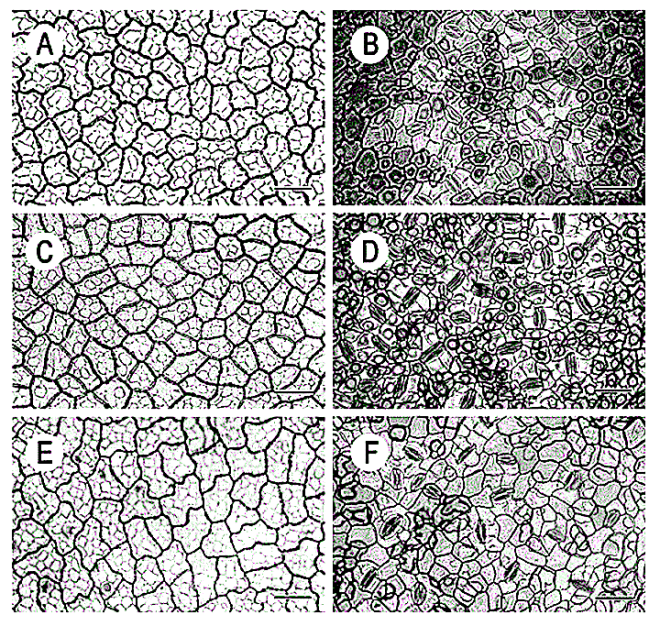
Abstract
Schizophragma and Pileostegia are treated as two separate genera on the basis of morphology and leaf epidermal characters. In Schizophragma, seven species and five varieties are recognized, and two new synonyms are proposed and one lectotype is designated.
Leaf epidermal characters are of great significance in taxonomic classification in Schizophragma. In Pileostegia, two species are recognized, and two new synonyms are proposed and two lectotypes are designated. Descriptions, maps, notes on ecology and phenology and keys to both genera are provided.
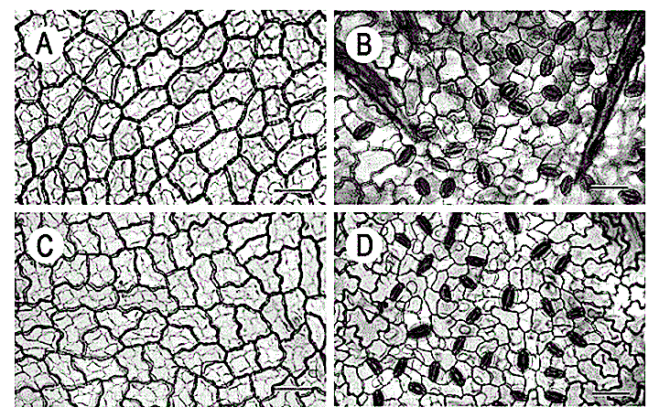
In Schizophragma, stomata are only present on the abaxial epidermis and confined to aerolae. Laterocytic, anomocytic and tetracytic types of stomatal apparatus are observed. Cuticular intrusions, known as ‘T’ pieces, are found between the ends of each guard cell in all the taxa of Schizophragma. The outline of guard cell pairs is elliptic in surface view, with length/width ratios of 1.3–1.5 : 1.
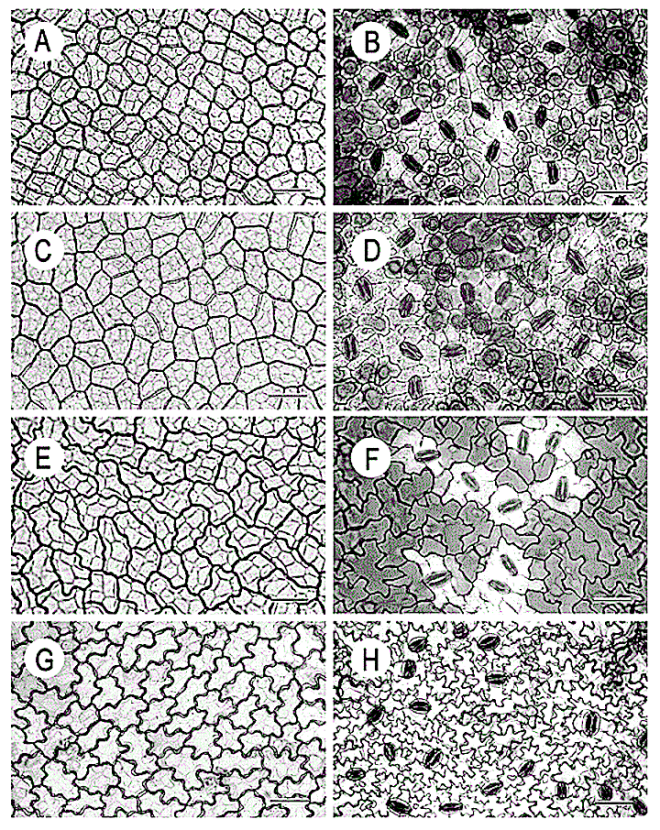
Stomata are only present on the abaxial epidermis and are randomly oriented over most of the surface in Pileostegia. Laterocytic and anomocytic types of stomatal apparatus are observed, and ‘T’ pieces are also found between the ends of each guard cell in both species. The guard cell pairs usually have a nearly round outline in surface view, with length/width ratios of 1.1 : 1.
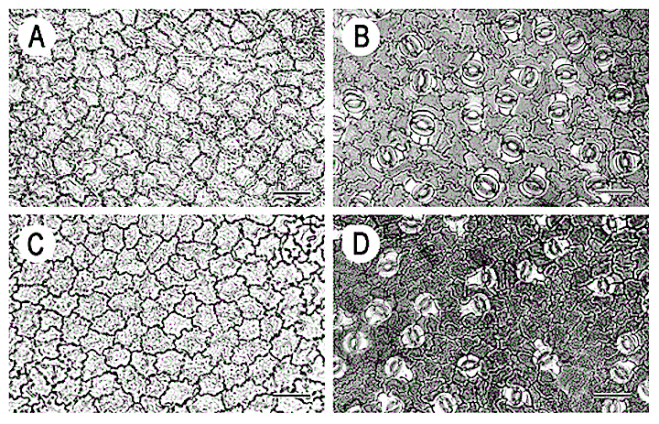
| Schizophragma | Pileostegia |
|---|
